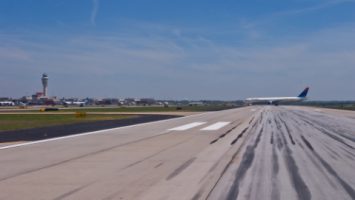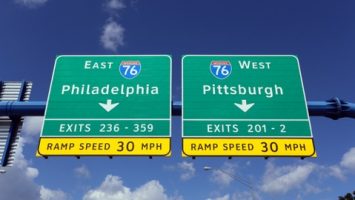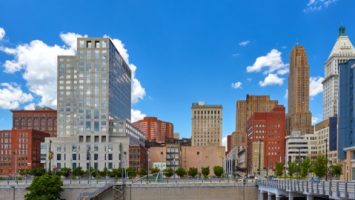
I recently had the privilege to interview Lieuteant Colonel Daniel Solow of Nevada Highway Patrol at Smart Cities Connect Conference and Expo in Tampa, Florida. The event convenes both smart cities and defense professionals. Lieutenant Colonel Solow is the Assistant Chief of the agency and oversees all day-to-day operations of the Highway Patrol. The duties of the Highway Patrol include, without limitation, “to police the public highways of this State, to enforce and to aid in enforcing thereon all the traffic laws of the State of Nevada and to enforce all other laws of this State…”. This statutory guidance leads to a primary mission of providing traffic safety and service to the motoring public as they use the state’s highway transportation system of over 40,000 lane miles of road and protection of the system that transports over 160 billion dollars’ worth of commerce annually. Highway Patrol works very closely with the Nevada Office of Traffic Safety, the Department of Transportation (NDOT), and the counties and cities of Nevada. In the interview, we speak about the future of mobility in the state and how smart transportation is taking form in Nevada.
Q: What is the jurisdiction of Nevada Highway Patrol? Are there roadways in the state for which you are not responsible?
A: We are a statewide Highway Patrol. We have primary jurisdiction on all Interstates, US Highways, and State Routes within the state. Local streets are left primarily to the county or city that they are in, but there are some exceptions to this that are covered by jurisdictional agreement. Regardless, our Troopers take enforcement action wherever needed in Nevada.
Q: When we think about the future of mobility, what does that look like in Nevada?
A: I think Nevada is in a unique position, especially in the area of mobility. Nevada has a large scale, busy metropolitan area (Las Vegas) contrasted by the rest of the state which is rural. Additionally, Nevada occupies a unique geographical area and serves as a bridge state from the largest west coast ports (San Diego, Long Beach/Los Angeles, and San Francisco) to the rest of the country. This, coupled with the unique tourist draw of the gaming/resort industry, brings tens of millions of people into the state every year.
Our government has been proactive in bringing technology and industry into Nevada and has positioned the state as a friendly place to come and build and test. Autonomous vehicles have been here for a while, and our regulators work hand-in-hand with industry partners. We have embraced ideas for enhancing safety on the roads with everything from roundabouts to back plates on signal lights to advanced technology that allows traffic safety partners to be proactive in responding to issues that occur on the highways.
To get more direct to the question at hand, I think Nevada is a leader in innovating technology into the field of mobility and that the future will show that a lot of programs get tested and refined here in Nevada. Autonomous technology seems to grab all of the attention, but littler details that get integrated into mobility systems are just as important now as they can have an immediate impact.
Q: What are some unique challenges that you would face in implementing modern transportation initiatives in your state or in general?
A: In public safety we are generally very risk averse. We really have to be shown that something works and can’t jeopardize what we currently do to keep people safe on the roadways. Also, in today’s climate, we in government are expected to do as much as we can with what we have. Getting additional funding can be difficult and nearly impossible for something that is new and unproven. For those with ideas and products that they want to get into our [public safety] market, pilot-type programs where we can use and test are great opportunities for both sides.
Q: Looking ahead and with public safety in mind, what about modern transit keeps you awake at night?
A: The distracted driving epidemic is huge, and I believe responsible for the change in trends towards the growing number of deaths on our nation’s roadways. While it is still primarily cell phone talk, text and data use as vehicles are integrated with more and more technology there are correspondingly more and more distractions.
Secondly, while semi/fully autonomous vehicles will help with that, the legal issues and public safety issues involving driver-less vehicles is already a concern. What happens when an autonomous vehicle is used for criminal or terrorist enterprise? How will public safety interact with these vehicles, prevent crime, etc.
Q: To keep our roads and our officers safe, what technology would you love to see invented or implemented?
A: Of course a fully-automated transportation system where vehicles can never crash would be amazing, whatever that looked like. Our goal in highway safety has used the slogan “zero fatalities” for a number of years now, but the real message needs to be “zero crashes.” There is a lot of promising technology out there in the form of driver assistance that will only continue to improve. The continued growth of analytics and proactive response systems is also a promising area where great strides are being made. In Southern Nevada, Waycare Technologies has partnered with many transportation partners and has a proactive warning system that is showing great promise. Ideas like this help everyone.
Q: What was your biggest take away from Smart Cities Connect Conference in Tampa?
A: I was really impressed with the number of people and states/counties/cities that have a real passion and desire for using technology to improve not only everyday life but really to protect us. While there were not a lot of public safety partners at the conference, it really is the partnership between technology, government and public safety that will improve everyone’s safety and lives.


